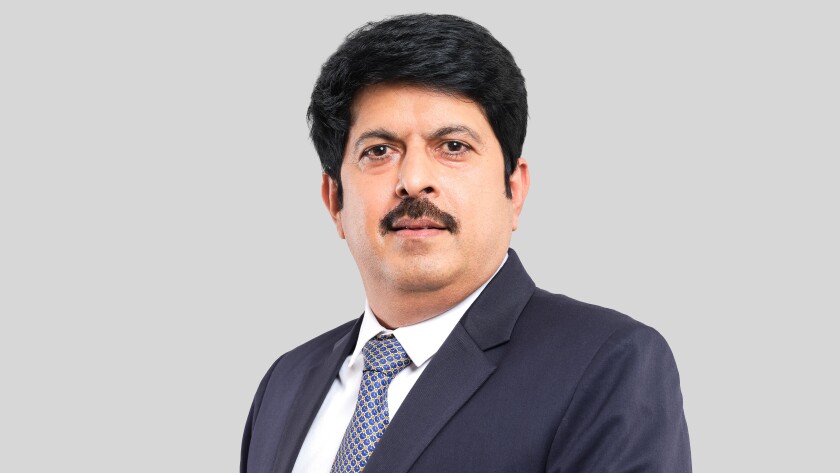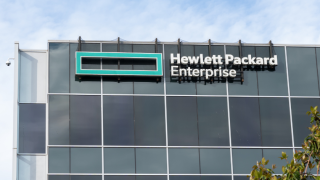When EdgeConneX stepped into India last year it did not do so alone. It formed a JV with a major local infrastructure player that has diversified assets, a knack for vertical integration, gigawatts of renewable power capacity, and acres of land.
That partner was Adani Enterprises, part of the Adani Group, and the resulting joint venture, AdaniConneX, is a developer-operator with plans for a network of hyperscale data centres across India. The hard target is for 1GW of data centre capacity within a decade with the first five locations announced at launch. The first facility, 17MW in Chennai, is due to come online in May.
“Last year, Adani Group surpassed the target of 25GW of renewable energy capacity and has built many megascale projects,” says Sanjay Bhutani, SVP and head of data centre business at AdaniConneX.
“The recent one is our data centre that was executed during the peak of pandemic and will be delivered in less than 18 months,” he says, praising the work of the team that pulled off the feat.
Although still concentrated in its major cities, India’s market is growing rapidly in all locations, but while JLL says total capacity in the country stood at 499MW in the first half of last year, there is a clear disparity in how that is distributed: 225MW is available in Mumbai, compared to 62MW in Chennai. However, the positive news is while 2021 saw India stand just shy of half a gigawatt, JLL expects that figure to double by the end of 2023.
“The good news is that India is seeing a tremendous growth and we have a lot of runway to cover. And AdaniConneX is confident of building data centres with 1GW capacity in the next decade,” Bhutani says.
Next year will see a combined 370MW go live across Mumbai, Pune, Noida and Hyderabad. These will be followed by a 100MW facility in Vizag in 2024.
On the demand for cloud, enterprise will account for 30% of the total capacity by current estimates, along with the growing government sector, and, of course, hyperscalers will take up the lion’s share. “I’m confident that AdaniConneX will achieve the vision of 1GW of data centre capacity well before the decade,” Bhutani says.
As per the current road map, tier two locations are next on the cards, but Bhutani says “the larger ecosystem still has to come”.
“We are working with the land developers, the telecom players and creating an infrastructure that helps the larger enterprises, and we have to be closer to the customer,” he says.
No data centre is an island
Firmly on the ecosystem bandwagon, the plans for AdaniConneX do not stop at individual data centres.
At the end of 2021, Adani Enterprises – a newco that is essentially an incubation arm for the group – separately launched the wholly-owned subsidiary Adani Data Networks Limited (ADNL) for networking and fibre builds. ADNL will also handle network infrastructure acquisitions and submarine cables out of India’s east and west coasts.
“It’s an interesting world. Data centres do not exist in isolation,” says Bhutani.
On the wider infrastructure gaps that need to be addressed across India, Bhutani says “that brings in the next phase for data centres” and that “Adani Group is already working on with multiple partners to see how we can unlock that”.
Subsea cables are just one piece of the puzzle and Bhutani says Adani is working with hyperscalers and investors to explore how further value can be unlocked. On the fibre needed to connect all its data centres, Adani Group plans to cover that in-house too, and a new data centre fibre network is on the drawing board.
“We’re building an OPGW network ecosystem that will enable intercity data centre connectivity bypassing traditional highway routes,” Bhutani says.
This OPGW network will be deployed alongside electrical transmission lines, rather than underground, for the ultimate uptime promise.
“Nobody would ever dare to cut the [electrical] transmission line, and so the OPGW network will provide almost 100% uptime,” Bhutani says.
“That is a newness that Adani Group brings to the industry by positioning itself as a wholistic digital infrastructure provider,” he explains. “And, as a carrier-neutral data centre provider, we’ll work collaboratively with all telecom players in our growth journey.”
The case for business
With one billion people, thousands of corporates and enterprises, and a thriving start-up scene, growth takes on other forms in India. In the last calendar year, India’s start-ups raised US$35 billion during more than 1,000 funding rounds and 43 achieved unicorn status, taking the total count to 68 by the end of the year, PwC says. It expects this figure to surpass 100 by the end of this year – and there is a reason that is significant.
“When you have all those ingredients it’s high time to create the infrastructure that is scalable, sustainable and has the one-stop-shop data centre needs, including undersea or terrestrial cables, all offered with sustainability,” Bhutani says.
Backing it all, the country’s 2022 budget included a series of policy and regulatory announcements specifically intended to bolster support for data centres. They are now officially classified as infrastructure, “on a par with power and railway”, Bhutani reports.
This means operators can raise long-term credit at cheaper rates or raise funds and borrow from the India Infrastructure Finance Company, an entity established in 2006 that is wholly owned by the government to provide long-term financial assistance to “viable infrastructure projects”.
“Both federal and state governments have done a lot of work. I’m happy to say many of the states have come out with policies that are very friendly for the industry, in terms of taxes, land parcels and incentives,” Bhutani says, adding that the competition to attract investment is already heating up between different states.
There is still work to be done, and Bhutani says he would like to see more frameworks for government and private sector collaboration on such things as renewable energy use, but overall “it’s a big boost to our sector”.
Rapid growth
While India has bold ambitions for its overall growth, such pace has proven to be a double-edged sword for the likes of Singapore and Dublin, which have both turned to regulatory mechanisms to control the runaway pace they have seen in data centre developments.
In the case of India, it raises the question that with this combination of cheap credit, competition between states and a rush to approve applications, could the country’s market grow too quickly?
“India is in the nascent stages of adopting cloud, so for the next five to 10 years growth will be immense. Some predict 20%, some 25%, but the market always outpaces the predictions,” says Bhutani.
However, Bhutani believes this growth – coupled with the demand for facilities powered with renewables – will, if anything, put India at an advantage. Data transfer laws permitting that is.
“We see in the Asia-Pacific and EMEA regions a lot of countries have power issues and India can help them to grow. There will be a lot of collaboration with other countries to host their data in India using green power,” says Bhutani. “We are not only solving their data challenges, but the sustainability costs too.”
The approach comes back to the question of whether it is more efficient to transport megabytes and gigabytes or gigawatts – a question many have tried to answer, particularly in the Nordics.
AdaniConneX’s vision reflects that of others who, for example, offer high-capacity connectivity between Germany and Norway by leaning on their terrestrial and subsea connectivity, combined with the renewable power offered in Norway, where the real energy-intensive stuff happens.
For AdaniConneX, the 25GW solar milestone referenced by Bhutani was achieved ahead of Adani Group’s self-imposed 2025 deadline, and in 2020 it saw the firm claim the title of the world’s largest solar company. The trick now will be to ensure AdaniConneX can roll out its data centres – and lots of them – while the sun shines.
But Bhutani is confident the goals can be achieved: “It’s an exciting time and we see massive growth coming our way.”





